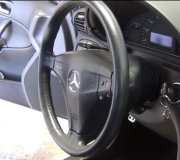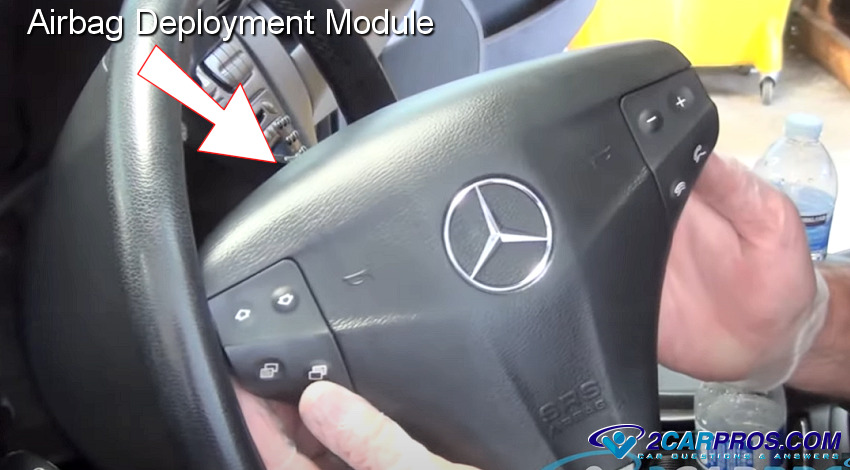I've been a suspension and alignment specialist, a brake system specialist, and an electrical specialist for over 36 years, including teaching these subjects for nine years at a local community college. As an instructor. I'm required to attend a "state-called meeting" once a year for all the Automotive instructors in the state. Part of that two-day affair includes attending my choice of three one-hour sessions by people in the industry including corporate trainers from the auto manufacturers, auto parts stores, text book suppliers, and legal specialists. I can assure you steel rotors do warp when they haven't been properly aged before they get their final machining. That is from a Napa representative who is very familiar with the problem and its simple fix.
Along with this relatively new warping issue, since at least the mid '90s, we are also running into intermittent very hard brake pulls to one side caused by improper rotor machining procedures. If your mechanic is not familiar with the warping problem, he is also likely not familiar with this one. In the past we would machine a customer's pair of rotors, and the only thing we cared about was they were still at or above the published legal minimum thickness. No problem was caused if one rotor ended up a lot thicker than the other one.
Those days are gone. It started out with the heavier trucks, typically with diesel engines. It will stop just fine for eight or nine stops, then the next time it would tear the steering wheel out of your hand and you'd end up on the sidewalk or in the other lane. This all had to do with how fast the temperature increased in the linings, and different rotor thickness was the cause of temperature rising faster on one side. That caused the coefficient of friction to change at different rates.
When you get to the end of the 32-page service bulletin that described the dozen or so variables to check, it boiled down to checking that the two rotors are the exact same thickness, and were machined at the exact same speed. I repaired two trucks for our district representative for my state. The first of these I was involved in was a lemon-law buyback from Chrysler. GM just gives up on their buyback vehicles, and they donate them to schools or they scrap them. Chrysler insists the vehicle must be properly repaired regardless of cost, then it can be sold as a used vehicle. In this case, the truck got its first brake job at 88,000 miles, and that is when the problem started. After checking everything else, including problems with the suspension and steering systems, the rotors turned out to be.020" difference in thickness. That's.020" difference on rotors that are over 1 1/4" thick. A light cut on the thinner one, then multiple cuts on the thicker one to match the first one solved the brake pull problem.
For the second truck, the district rep. Brought the truck to my dealership since I was the only person who could solve the first one's problem. (All I did was follow the service bulletin). On this second truck, the difference in rotor thickness was only.007", about the thickness of two sheets of paper. This one was in and out of the shop in less than two hours, solved with a light machining on both rotors.
The point of this sad story is up to the mid '90s, if anyone had said a difference in rotor thickness would lead to a brake pull, we would have laughed them out of the shop. In fact, to save money, I cut one rotor on my '78 LeBaron.125" under the legal limit, that's an eighth of an inch on a 7/8" thick rotor, and never had a problem. That may be where your mechanic's experience lies, especially if he works at an independent repair shop. They don't get the manufacturer's and other high-level training unless they pay a real lot for specialized classes. Carquest has an ongoing training program, and lucky for me, I was allowed to attend for free in return for letting them use a meeting room at my college. Our instructor owns a shop in IL that specializes in solving the one in a hundred problems no one else can solve, then they develop a monthly training class around that. Their customers are mainly other shops. These high-level instructors network with others like them around the country, and manufacturers' trainers, to share information and get it out to the independent mechanics. The problem is these classes are very expensive, so only the most professional independents take advantage of them. This is another place where your mechanic would have heard of the rotor warping problem. I didn't figure out this aging of cast iron parts myself. I had to learn it from multiple sources, and experience it myself many times.
Your first sentence in your reply suggests to me your mechanic, while possibly very professional and experienced, hasn't learned of the warping problem yet. Brand new rotors absolutely do warp, and it is almost always near when they've been on the car for three months. Brake system specialists at every new-car dealership run into this as a warranty problem over and over. In the past we were not allowed to machine rotors while the car was under warranty because in theory, that reduced the life expectancy of the part below what was designed in. Once the cause was understood and the expense of replacing thousands of perfectly fine rotors was realized, we finally were allowed to machine them one time under warranty, and that was all that was ever needed.
One more thing that makes this an elusive problem is in an effort to make cars lighter to get better fuel mileage, the rotors are made so thin that with normal wear, they are often already below the legal thickness limit, or they will be if we try to machine them. For that reason, and the fact that new rotors are so extremely inexpensive now compared to 30 years ago, when you factor in the labor time and the cost of consumables on the brake lathe, it is less expensive to just throw away the old rotors and pop new ones on. They come already machined to the same thickness and same speed of cut, so they are identical and will heat up evenly, thus avoiding that brake pull that shows up unexpectedly when they get hot.
If I still haven't convinced you that this is the likely cause of the shaking, I gave you a long list of other potential causes. Due to rings of rust and / or dirt buildup on the pistons in the calipers, and the crud that can develop behind those pistons, these things don't cause problems until the new pads are installed. A lot of competent do-it-yourselfers can hang new pads on a car, but there is a real lot more that goes into a professional brake job. It takes experience to see when a caliper is going to cause a braking vibration or a sticking brake, and to know when corrective action has to be taken.
Shaking and vibrations can only be caused by a part that is rotating, in this case, a rotor, but remember that a caliper problem can be the initial reason a new rotor heated up unevenly and warped. The first thing to observe when the car is raised off the floor is if you can spin the tire and wheel easily with one hand. If you have to grunt, or you need two hands, the caliper is not releasing.
If the brake is free, the next step is to use the dial indicator to check if the wheel is wobbling. If it is, given the recent service, the best suspect is the rotor is not fully seated on the hub, due to rust, scale, or debris caught under it. If run out at the wheel is very low, remove it, then check the rotor's run out. If that is also very low, the last suspect is "thickness variation". That is measured with a micrometer at multiple places around the rotor. Generally anything less than.002" is acceptable. Any more than that and you will start to feel a pulsation in the brake pedal. You didn't mention that, so I neglected to include that in my initial reply.
Please keep us informed on your progress and the solution.
Saturday, June 27th, 2020 AT 10:42 PM



